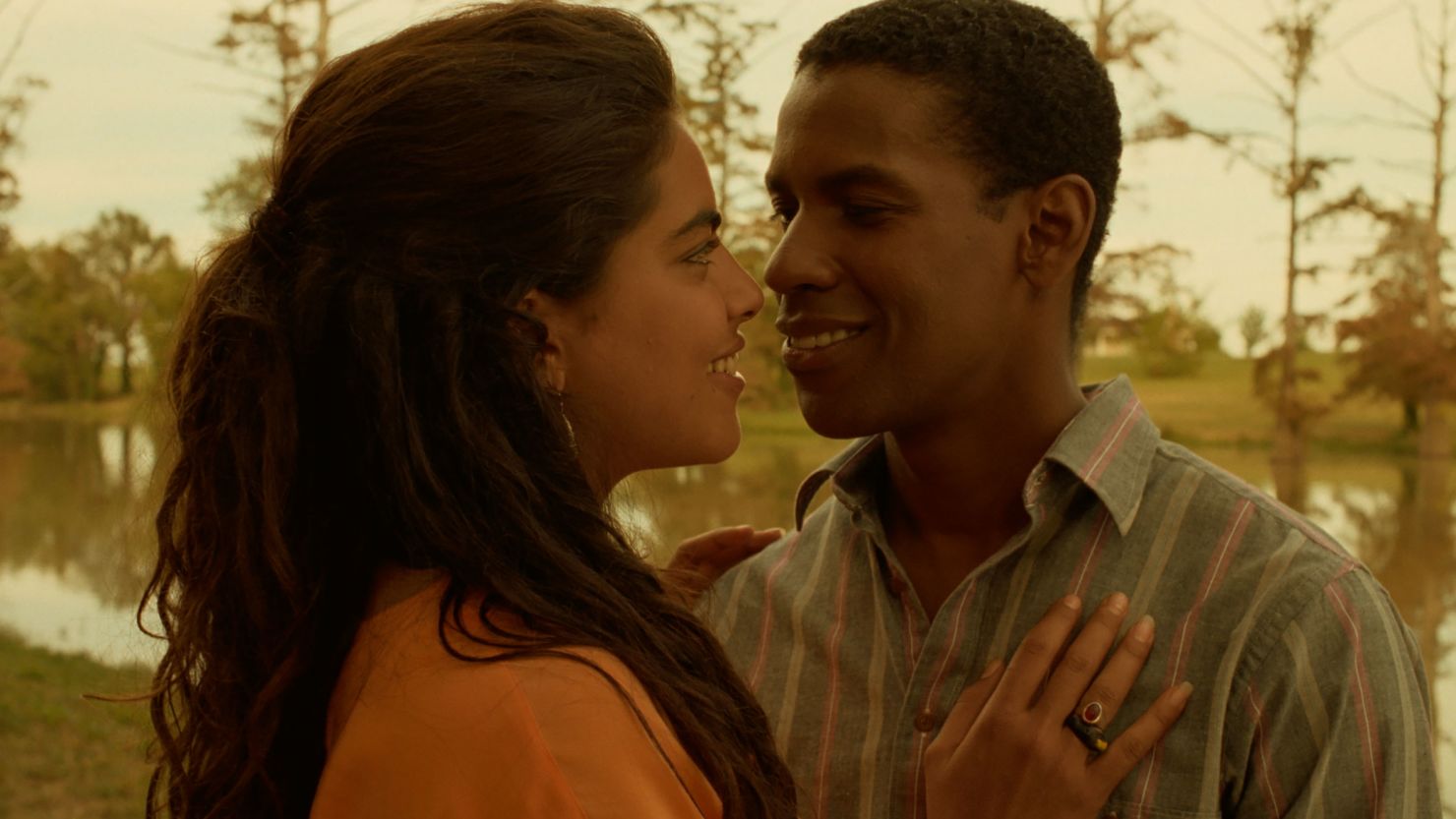There’s a scene halfway through “Mississippi Masala,” where Denzel Washington and Sarita Choudhury are just talking.
They’re both lying in their respective beds, a phone cradled to their ears. His hands fiddle with the bottom of his shirt, exposing a soft belly. Hers absentmindedly run through her hair; the camera pans down her legs.
The two characters – Washington’s Demetrius and Choudhury’s Mina – are miles apart in the scene, nowhere near touching. Still, the tension is arresting.
“The one thing I’m consistently hearing now is that it is amongst the sexiest films of all time,” director Mira Nair told CNN with a laugh. “And everyone is kind of unanimous about discussing the phone scene.”
Nair’s “Mississippi Masala,” first released in 1991, became somewhat of a cult classic – but in recent years, actually finding a copy of the film was difficult. Now, Criterion Collection has released a 4K digital restoration of the film supervised by Nair and cinematographer Edward Lachman. The film is also in the midst of a national theatrical rollout, exposing it to new audiences across the country.
The premise of “Mississippi Masala” is both simple and complex. At its core, the film is a love story between a young Indian woman born in Uganda and an African-American carpet-cleaner who has never left Mississippi. But Nair uses this love story to draw attention to some difficult realities: pointing out colorism, racism, anti-Blackness, classism and xenophobia across races, while also asking hard questions of humanity and identity.
After all, what does it mean to be from a place? What is home? What is belonging? What is race? Somehow, “Mississippi Masala” digs into all of it – and does so while deftly evading any semblance of sermonizing.
‘Mississippi Masala’ started at Harvard
Nair’s own experiences as a student at Harvard University ground the film. Her arrival in Cambridge, Massachusetts marked the first time she had left India, her home country, and she found herself living between the Black and White communities at the school. Both let her in, but she felt the borders between the two. This is how the idea behind “Mississippi Masala” first grew.
Later, she learned about the expulsion of Asian people from Uganda, and about Indians who moved to Mississippi, because it was one of the only places they could afford to buy their own businesses, particularly motels. The outlines of the film’s story began to take shape.
This history piqued Nair’s interests. These Indians left Africa, having never known India as home, and arrived at one of the centers of the civil rights movement in Mississippi, amongst African Americans who had never known Africa to be their home.
“What a strange trick of history this might be,” she thought at the time.
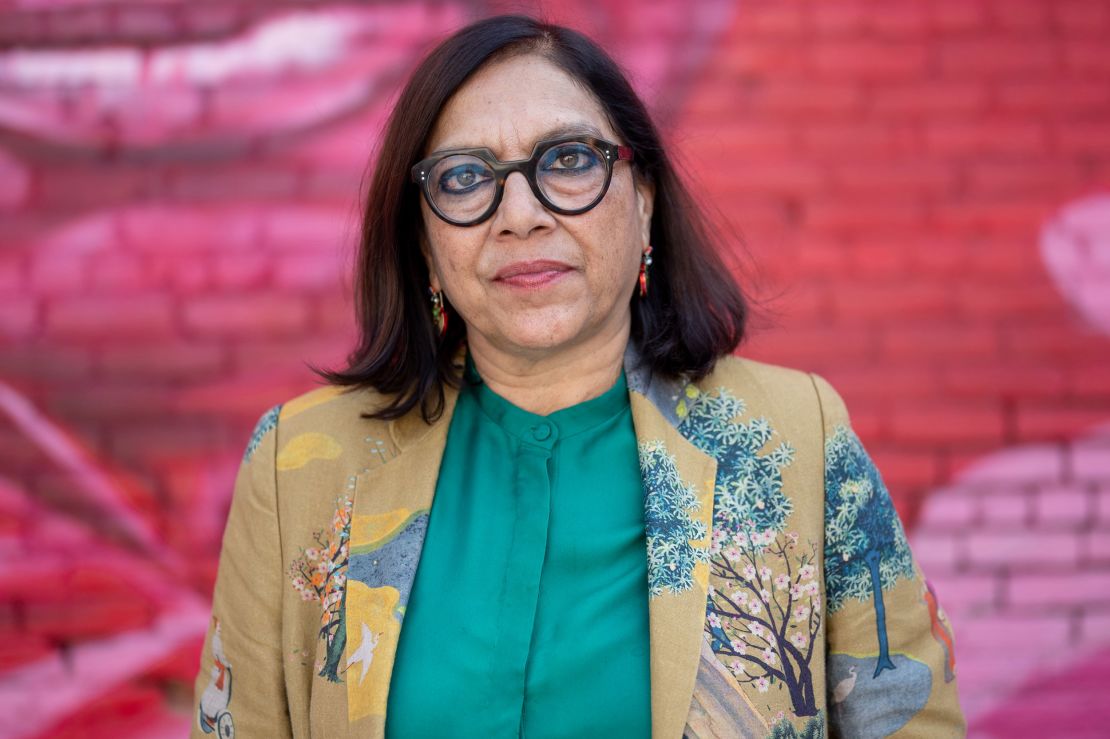
Mina’s family is based on those Indians, expelled from Uganda and working in Mississippi motels. Throughout the film, Nair uncovers the connection between Mina’s community and Demetrius’ African American lineage.
Nair and screenwriter Sooni Taraporevala – who wrote two other Nair films, “The Namesake” and “Salaam Bombay!” – took a months-long trip across the South, staying in Indian-owned motels and meeting the real-life people who would influence the script. Nair interviewed thousands of Ugandan exiles, she said, and the two also traveled to the East African country to meet with some who had refused to leave or who had begun to return.
The attention to detail is rich throughout the film. But it averts some of the more sinister elements of its subject matter, even playing some of the more racist moments for laughs. Two recurring racist White characters, for example, keep confusing Indian people with Native Americans, saying things like “Send them back to the reservation” – something Nair and Taraporevala experienced during their trip.
“Portraying the reality of what we were living around was so funny compared to anything else, and yet it was a portrait of ignorance and of complete oblivion about what the reality of the world is,” Nair said.
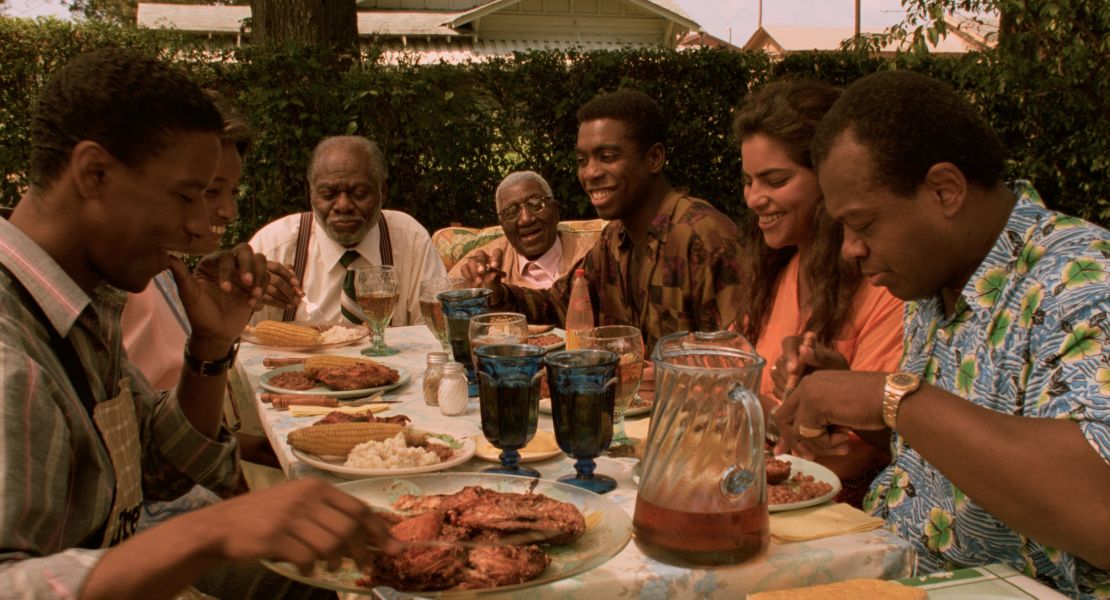
Urmila Seshagiri, a professor at the University of Tennessee Knoxville, has taught “Mississippi Masala” in her classes for over two decades. But before she was a professor, she was an excited college student – one who had driven into Cleveland from Oberlin College to see the film at an art house.
“To see an Indian woman in a feature film as the main character was astonishing at that time,” Seshagiri told CNN.
Months later, she took her parents to see the film too. It’s been decades, but she remembers the audience in that theater: the Black people all sat on one side, the Indian people on the other.
The film’s Criterion rerelease speaks to its enduring radicalism. Seshagiri used an early moment in the film as an example: When Mina’s family moves from Uganda to Mississippi, their journey is depicted over a map. As the camera pans from Uganda to England, the journey is soundtracked with Indian classical flute – which then morphs into a blues instrumental reminiscent of the Mississippi Delta. It’s a subtle shift, but a brilliant one, she said.
“It really speaks to the film’s insistence that no one is only one thing,” Seshagiri said. “That identities are always plural; they’re always blended, that no one is authentically or uniformly one thing or the other.”
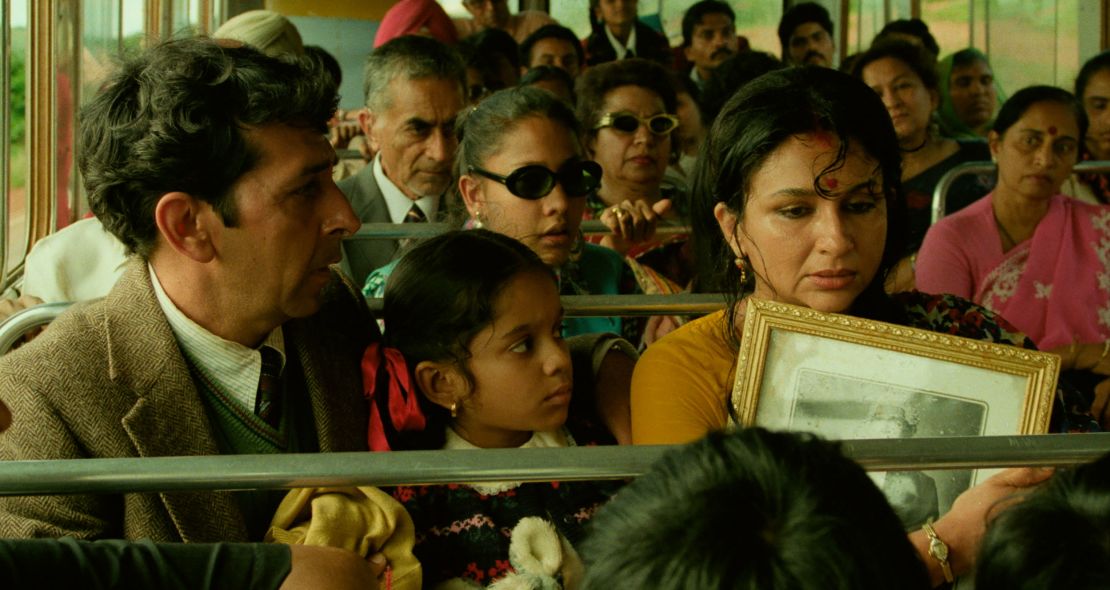
That type of nuance is one still rarely portrayed by Hollywood today. Even just placing in tandem the histories of enslaved people in the US and colonized subjects of the British empire is profound – showing that these stories may be closer than history textbooks reveal, Seshagiri said.
And the film doesn’t shy away from the ugly parts of that relationship, either. In one scene, Washington’s Demetrius confronts Mina’s father, played by Roshan Seth, after some Indian motel owners boycott his business.
“I know you and your folks can come down here from God knows where and be about as black as the ace of spade, and as soon as you get here you start acting White. Treating us like we’re your doormats,” Washington says. He points to his cheek. “I know you and your daughter ain’t but a few shades from this right here. That I know.”
Other films in the early 1990s asked similar questions
Though the film has been successful, “no one, really no one” wanted to finance it, Nair said.
Her first film, “Salaam Bombay!,” was a huge hit at the time – having been anointed with some of the most coveted prizes in cinema, winning the Caméra d’Or at the Cannes Film Festival and earning a nomination for best international feature at the Academy Awards. When people heard she was doing a second film, they wanted to meet her, Nair recalls. And she had Denzel Washington.
Yet even the most progressive were hesitant, Nair said, asking her to make room for a White protagonist.
“I promise all the waiters in this film be White,” she would say. They would laugh nervously; she would guffaw. And then she would be shown the door.
“They wanted to make something else of (the film) rather than what it was going to be,” Nair told CNN. “So it was not easy, really not easy.”
Eventually, Cinecom, which had financed and distributed “Salaam Bombay!,” bit. But the budget was tight by Hollywood standards: a mere $5 million, about half what she’d asked.
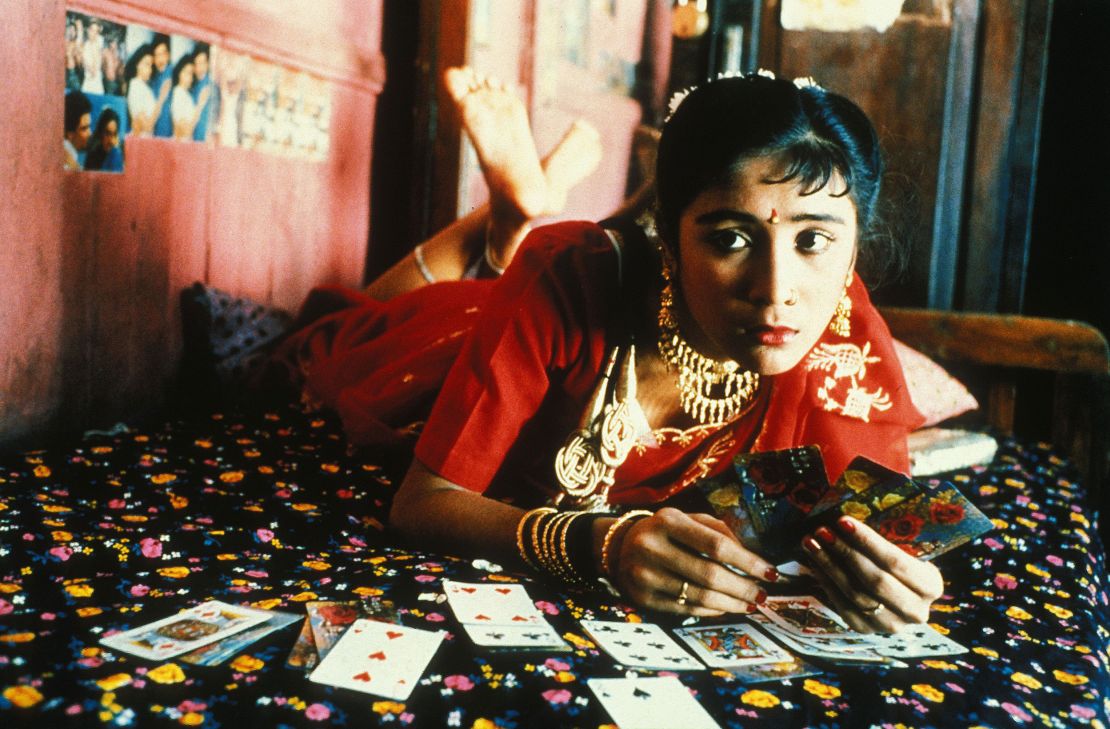
These days, women of color filmmakers and television creators are more common: Issa Rae, Mindy Kaling, Shonda Rhimes, Chloé Zhao and Ava DuVernay are all well-known with varying degrees of acclaim. In the 1990s, though, the filmmaking landscape was still very male, very old school and very White, Seshagiri said. And “Mississippi Masala” – with its dual locales and multigenerational actors from different countries – is very much the antithesis of that.
“For Mira Nair to direct and win international awards for directing feature films was pathbreaking,” she said. “I mean, that was incredible.”
The fact that a film like “Mississippi Masala” even exists, then, is almost a miracle. But Nair wasn’t working in a vacuum.
The movie’s release coincided with a breakthrough period for films about minority and immigrant communities in dialogue with each other, Seshagiri said, rather than in contrast to a White majority. Spike Lee’s “Do The Right Thing” preceded “Mississippi Masala,” which was later followed by Gurinder Chadha’s “Bhaji on the Beach,” and Ang Lee’s “The Wedding Banquet.” All the films play in a similar space.
“These films … really allowed minority characters to be complex and multidimensional,” Seshagiri said. “They didn’t have to be representative of one entire group of people. And these characters could be funny and they could be sexy, even while they were experiencing real problems or feeling real pain.”
Other films released the same year as “Mississippi Masala” ask similar questions about belonging. Seshagiri pointed to Julie Dash’s “Daughters of the Dust” and John Singleton’s “Boyz n the Hood.” Though they are not immigrant films in the same vein as Nair’s film, she said they grapple with the question of how we affiliate ourselves within and without families or local and national collectives.
“Mississippi Masala” received largely positive reviews from major outlets and critics, including Roger Ebert and the New York Times, at the time of its release. (Eber gave the film 3.5 stars out of 4). Many seized on how unique the story was.
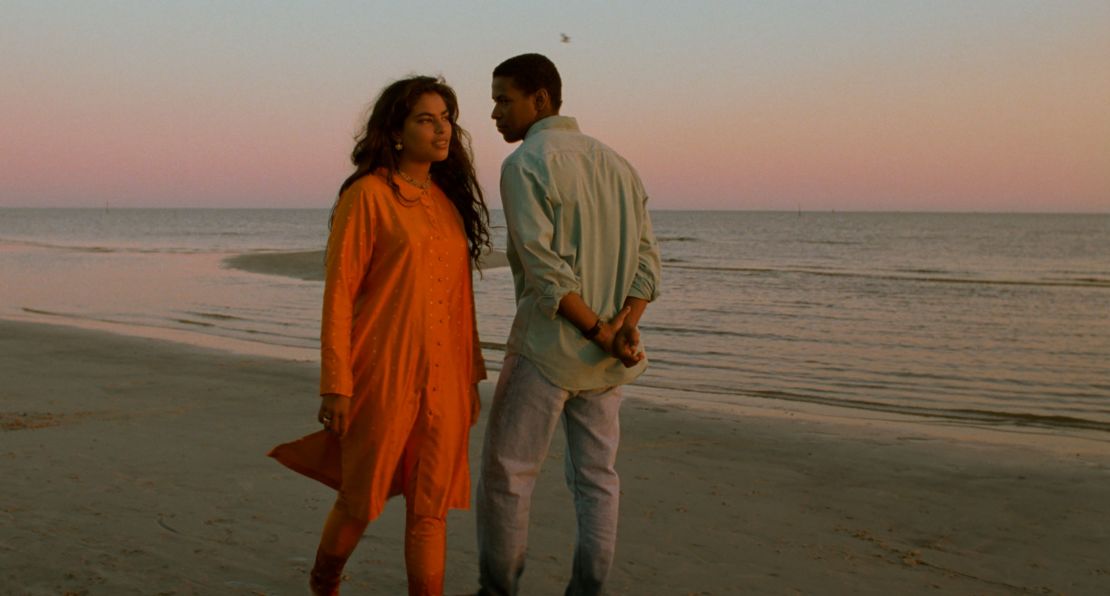
But some academic feminists were less enthused – namely bell hooks, who wrote a piece with scholar Anuradha Dingwaney Needham, criticizing the film. In the widely cited 1992 review, the writers argued that the film carouses in stereotypes of the Indian, Black and southern White characters, saying that the exploration of their relationships was shallow and mocking.
They also condemned the film’s political bent, particularly the idea that romantic love can somehow overcome systems of oppression and domination.
The film does end on an optimistic note, but it’s cautious: Mina and Demetrius, dressed in vaguely “ethnic” clothing, playfully kiss in a field of cotton.
The scene takes place in the credits, after the actual film has ended. There isn’t room for that love in the movie itself, Seshagiri noted. At that time, there wasn’t a world where Mina and Demetrius could live happily ever after.
The question lingers: Is that love possible in the confines of American society? Is now any different? Mina and Demetrius might hope so.
